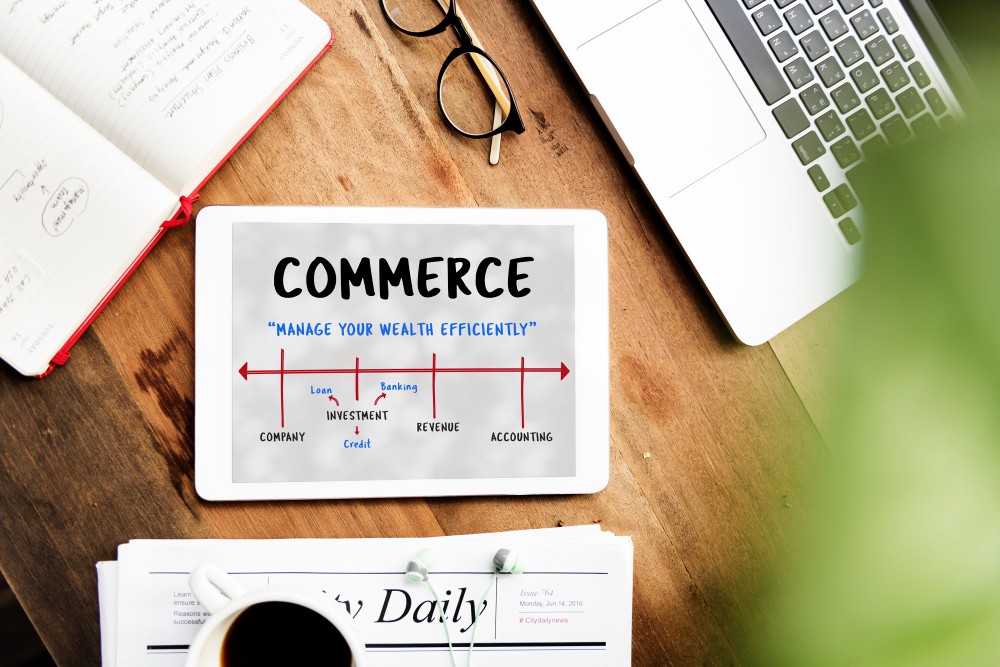The e-commerce market has transformed the way that consumers shop, by offering them convenience, variety, and competitive product pricing. However, as this market continues to grow, so does the level of competition between sellers who are vying for the same set of consumers. Advertising on e-commerce platforms allows sellers to showcase their unique selling points. This also helps build consumer awareness and engagement, while highlighting new products, promotions, and brand stories, which are essential for fostering interest and driving conversions. By leveraging advanced targeting and personalization, online advertising ensures relevance, enhances brand identity, and cultivates loyalty, ultimately supporting the growth and success of the evolving e-commerce market.
In the past, advertising in e-commerce primarily relied on external and digital ad methods. Sellers would often use banner ads, Google Ads, or social media promotions to drive traffic to their online stores or product pages. These ads were typically disruptive, appearing outside the shopping experience—on websites, in email newsletters, or as pop-ups. They lacked precision targeting and were often charged by impressions (CPM) or as a flat fee, regardless of performance. This meant that sellers paid for their product visibility, even if no clicks or conversions occurred from potential online shoppers.
When e-commerce platforms began experimenting with basic sponsored placements, the early ad formats lacked the seamless integration and performance-based models that we see today. There was limited control, little real-time data, and no native tools for sellers to promote individual products within the platform ecosystem. These advertising solutions didn’t guarantee product visibility in crowded marketplaces—highlighting the need for more refined solutions like the Pay-per-Click (PPC) advertising model.
Introduction To Pay-Per-Click (PPC) Advertising
The Pay-Per-Click (PPC) advertising is a foundational element of modern digital marketing and is especially critical within the e-commerce industry where it is used to attract targeted traffic and drive sales. In PPC advertising, e-commerce sellers pay a fee each time their online advertisement is clicked by a user. Unlike traditional advertising, where you pay upfront for visibility, PPC advertisements only charge for actual engagement, in this case, clicks. This model is prevalent on platforms such as Google Ads, Bing Ads, and e-commerce marketplaces including Amazon, eBay, and Etsy, where advertisers bid on keywords or ad placements relevant to their products.
PPC advertising doesn’t just help individual sellers, it contributes to the broader e-commerce ecosystem by:
- Increasing Buyer Engagement: Shoppers see more relevant, better-optimized products, while browsing.
- Providing More Competitive Pricing and Offers: Sellers have to continuously innovate to stay ahead.
- Enabling Faster Product Discovery: Helps move inventory faster and improves the overall shopper experience.
- Improving Platform Revenue: Advertising models help platforms reinvest in seller tools and in turn, improve the buyer experience
In summary, better advertisements lead to better product visibility, which leads to better sales, and in turn, grows the e-commerce market.
Implementing PPC Advertising
The different steps involved in PPC advertising are
- Selecting Products for Promotion:
Sellers choose specific products that they wish to promote based on factors like popularity, seasonality, and / or potential profitability. The goal is to get these listings in front of high-intent shoppers. - Setting a Budget and Bid:
Sellers set their advertising budgets and bid amounts, determining how much they’re willing to spend for each click. The bid plays a key role in ad placement — higher bids often win better spots. - Ad Auction and Placement:
When users perform searches on e-commerce platforms, an auction determines the placement of the advertisement. Advertisements are ranked based on bid amounts and relevance scores, which decide their visibility in search results or product listings. The greater your product match and the more competitive your bid, the better your position in search results. - Displaying Ads and User Interaction:
Winning PPC advertisements are prominently displayed, inviting users to click and explore further. Advertisers are charged only when the ad is clicked, ensuring advertising costs align directly with user engagement. - Customer Tracking and Performance Analytics:
PPC provides comprehensive performance metrics, including Click-Through Rate (CTR), Cost Per Acquisition (CPA), and Return on Ad Spend (ROAS). This detailed reporting allows advertisers to accurately measure campaign effectiveness.
Tracking the PPC Model
To accurately measure whether PPC campaigns are working, sellers must consider these key metrics and methods:
- Click-Through Rate (CTR):
CTR measures the percentage of people who click on an ad after seeing it. If a PPC ad appears 2,000 times and receives 200 clicks, the CTR is 10%. A higher CTR indicates effective advertisement targeting and messaging. - Conversion Rate:
This metric tracks the percentage of clicks that result in a desired action, such as a purchase or sign-up. If 200 users click on a PPC advertisement and 40 users make a purchase, the conversion rate is 20%, indicating strong relevance and effectiveness of landing pages and advertisement copy. - Return on Ad Spend (ROAS):
ROAS measures the revenue generated for every dollar spent on advertising. If an e-commerce seller spends $200 on PPC advertising and generates $1,000 in sales, the ROAS is 5:1, demonstrating a strong return on investment. - Cost Per Acquisition (CPA):
CPA calculates the cost of acquiring a customer through PPC. If a business spends $500 on PPC advertisements resulting in 50 sales, the CPA is $10 per acquisition, providing insights into the cost-effectiveness of the advertising campaigns. - Sales Growth and Revenue Trends:
Sellers regularly analyse the overall sales figures before and after implementing PPC ads to assess their direct impact. Let us assume that before using PPC, monthly sales averaged $2,000. After using PPC, if the monthly sales increased to $3,500, this indicates substantial growth. - Sales Growth and Revenue Trends:
Sellers regularly analyse the overall sales figures before and after implementing PPC ads to assess their direct impact. Let us assume that before using PPC, monthly sales averaged $2,000. After using PPC, if the monthly sales increased to $3,500, this indicates substantial growth. - Customer Lifetime Value (CLV):
Sellers evaluate long-term profitability by measuring repeat purchases and customer loyalty originating from PPC. If customers acquired through PPC spend an average of $150 over their lifetime, compared to $50 from organic sources, it highlights the higher value of PPC.
Benefits of The PPC Model
- Immediate Visibility and Traffic:
PPC advertisements instantly place your products in front of targeted consumers actively searching for related items. Unlike organic methods, PPC ensures quick visibility, which is especially valuable for new product launches or seasonal promotions. - Highly Targeted Advertising:
PPC allows businesses to select specific keywords, demographics, geographic locations, and consumer behaviors. Targeted advertisements significantly increase the likelihood of converting clicks into sales by reaching the right audience at the right time. - Cost Control and Budget Flexibility:
Businesses only pay when their ads are clicked, ensuring effective use of the advertising budget. Flexible budgeting allows companies to scale their campaigns based on performance, making PPC suitable for businesses of all sizes. - Detailed Performance Insights:
PPC provides comprehensive analytics, including CTR, CPA and ROAS. Businesses can easily measure and analyses their advertising effectiveness, allowing for continuous campaign optimization. - Competitive Advantage:
In crowded marketplaces, PPC provides the ability to outbid competitors and gain prominent advertisement placements. PPC helps businesses stay competitive by maintaining consistent visibility and attracting consumer attention. - Maximizing ROI with PPC Advertising:
Effectively leveraging PPC can result in significant returns on investment by attracting qualified leads and converting them into loyal customers. Continuous analysis of PPC campaigns enables businesses to optimize their advertising strategies, ensuring that each dollar spent contributes meaningfully to overall growth.
Conclusion
PPC advertising is a very powerful engine for growth in the competitive e-commerce market. By offering immediate visibility, targeted traffic, cost-effective budgeting, and robust analytics, PPC empowers sellers to efficiently attract customers, increase conversions, and maintain their competitive advantage. Embracing PPC is essential for sellers on e-commerce platforms who aim to achieve sustainable growth in today’s digital economy.

With over seven years of experience in data analytics, I’ve spent my career transforming complex data into clear, actionable insights that help businesses- especially in ecommerce—make smarter, faster decisions. Beyond work, I enjoy cooking and home gardening , like to experiment with new recipes and find joy in growing my own plants.



